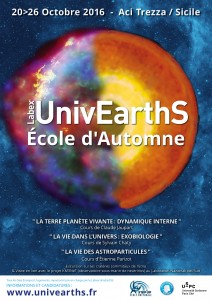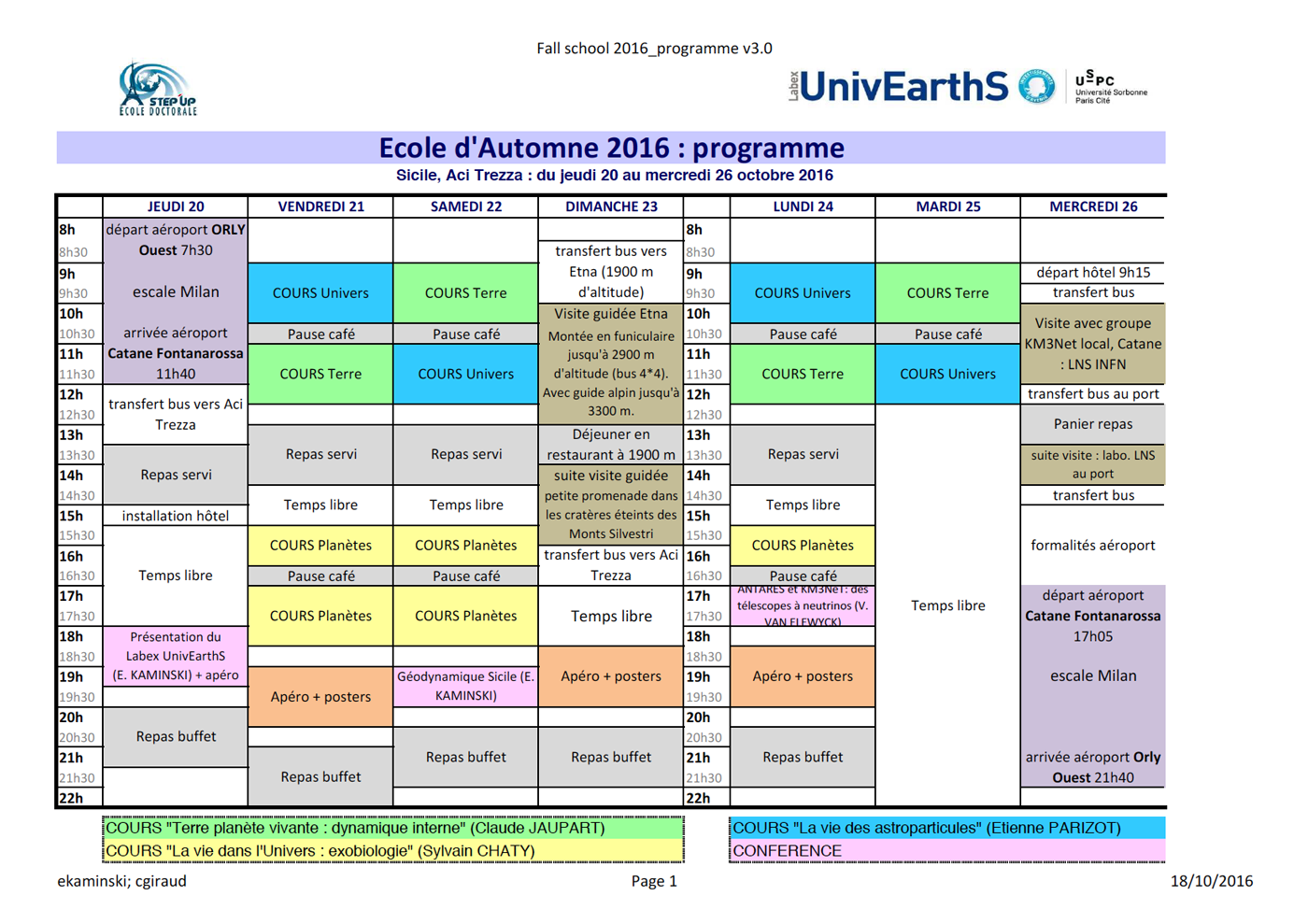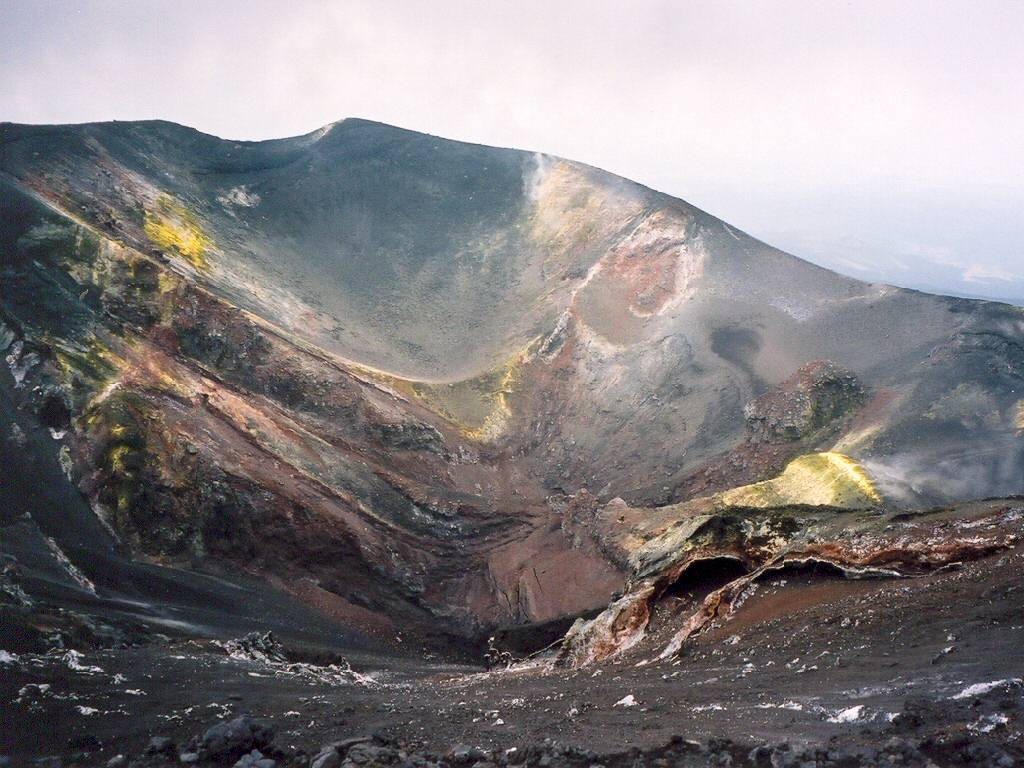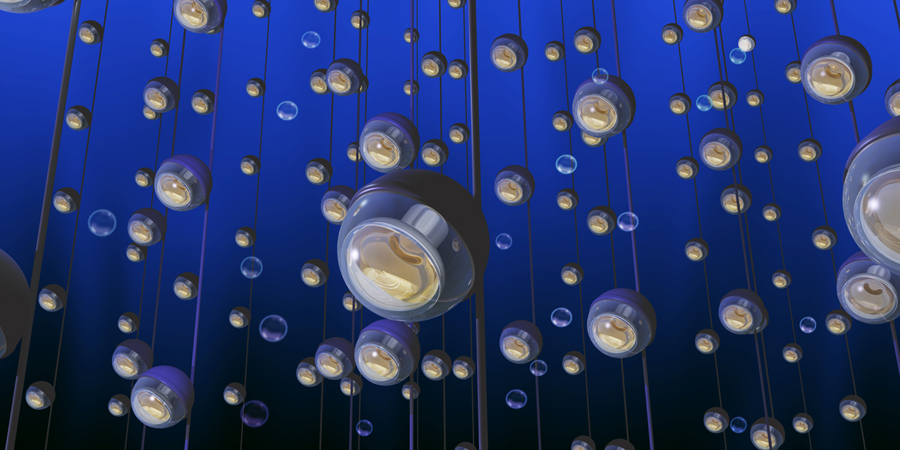UnivEarthS Fall School 2016 : application’s beginning
 UnivEarthS is a laboratory of excellence (Labex) funded by the french Future Investments Program. Interdisciplinary project combining geosciences and astrosciences, UnivEarthS includes an educational dimension. Since 2014, the Labex organizes an autumn school, inviting 30 participants in a course of one week on an exceptionnal location.
UnivEarthS is a laboratory of excellence (Labex) funded by the french Future Investments Program. Interdisciplinary project combining geosciences and astrosciences, UnivEarthS includes an educational dimension. Since 2014, the Labex organizes an autumn school, inviting 30 participants in a course of one week on an exceptionnal location.
The school’s goal is to provide training and a meeting point for students in different disciplines, to create interfaces and connections between Earth Science, Planetary Science and Physics of the Universe.
We are pleased to invite you to the third edition of this autumn school, organized in Aci Trezza (Sicily) from 20 to 26 October 2016. It is part of the overall theme of UnivEarthS “Earth – Planets – Universe : observation, modeling, transfer”.
Three courses are scheduled to give an overview from the basics of the discipline until the opening to the research :
- Earth Living Planet: internal dynamics (Claude Jaupart)
- Life in the Universe: exobiology (Sylvain Chaty)
- Life of astroparticles (Stephen Parizot)
Also planned: an excursion to Mount Etna and a visit carried out by Véronique Van Elewyck in connection with the European project KM3NeT (underwater observatory for neutrinos).
26 places are available, with full financial support for UnivEarthS (travel, hotel and meals). The courses and lectures will be given in French.
All the participants will present a poster about their latest research work or teaching.
This school is Labelled by the ED STEP’UP 109 and can be part of the doctoral training program.
-
The places (26) are accessible to the following categories:
- Students in master 2 STPE and GEO3
- Students of the masters 2 A&A and NPAC
- PhD students of ED 109 “Earth Sciences, Environment, and physics of the Universe, Paris” (STEP’UP)
- registered in the Earth & Environment program
- registered in the Universe’s Physics Program
- registered in the Earth & Environment program
- Members of UnivEarthS: PhD students, post-post-PhD, engineers, technicians
- High school sciences teachers
Registration is closed.
Applications must be sent BEFORE Monday, September 5.
A selection committee will review the nominations and confirm their participation to the successful applicants as soon as possible.

-
The lectures will be given by:
- Sylvain Chaty
Astrophysicist, AIM laboratory, Professor at University Paris Diderot, Member of the Institut Universitaire de France - Claude Jaupart
Geophysicist, former director of IPGP, Professor at University Paris Diderot, member of the Academy of Sciences - Edouard Kaminski
Geophysicist, Professor at the Université Paris Diderot and IPGP - Étienne Parizot
Astrophysicist, professor at the University Paris Diderot, APC laboratory - Véronique Van Elewyck
Astrophysicist, Lecturer University of Paris Diderot, APC laboratory
- Sylvain Chaty
-
During school, two excursions will be organized to allow participants to discover exceptional sites:

- Visit to the Etna : a trip to the summit craters of Etna volcano, with cable car + jeep and alpine guide (to at least 2500m above sea level). Good walking shoes are highly recommended!
Mount Etna is an active stratovolcano on the east coast of Sicily, Italy, in the Province of Catania, between Messina and Catania. It lies above the convergent plate margin between the African Plate and the Eurasian Plate. It is the tallest active volcano in Europe, currently 3,329 m (10,922 ft) high, though this varies with summit eruptions. It is the highest mountain in Italy south of the Alps. Etna covers an area of 1,190 km2 (459 sq mi) with a basal circumference of 140 km. This makes it by far the largest of the three active volcanoes in Italy, being about two and a half times the height of the next largest, Mount Vesuvius. Only Mount Teide in Tenerife surpasses it in the whole of the European–North-African region. In Greek Mythology, the deadly monster Typhon was trapped under this mountain by Zeus, the god of the sky and thunder and king of gods, and the forges of Hephaestus were said to also be located underneath it.
Mount Etna is one of the most active volcanoes in the world and is in an almost constant state of activity. The fertile volcanic soils support extensive agriculture, with vineyards and orchards spread across the lower slopes of the mountain and the broad Plain of Catania to the south. Due to its history of recent activity and nearby population, Mount Etna has been designated a Decade Volcano by the United Nations. In June 2013, it was added to the list of UNESCO World Heritage Sites.

- Visit in connection with the project KM3NeT: Laboratori Nazionali del Sud of INFN: visit of the integration chain KM3NeT optical modules and the integration of detection lines lobby. To be confirmed.
Learn more about on the project web site: KM3NETKM3NeT, an acronym for Cubic Kilometre Neutrino Telescope, is a future European research infrastructure that will be located at the bottom of the Mediterranean Sea. It will host the next-generation neutrino telescope in the form of a water Cherenkov detector with an instrumented volume of about five cubic kilometres distributed over three locations in the Mediterranean: KM3NeT-Fr (off-shore Toulon, France), KM3NeT-It (off-shore Portopalo di Capo Passero, Sicily, Italy) and KM3NeT-Gr (off-shore Pylos, Peloponnese, Greece).
KM3NeT will search for neutrinos from distant astrophysical sources like supernova remnants, gamma-ray bursts, supernovae or colliding stars and will be a powerful tool in the search for dark matter in the universe. Its prime objective is to detect neutrinos from sources in our galaxy. Arrays of thousands of optical sensor modules will detect the faint light in the deep sea from charged particles originating from collisions of the neutrinos and the water or rock in the vicinity of the detector. The research infrastructure will also house instrumentation for other sciences like marine biology, oceanography and geophysics for long-term and on-line monitoring of the deep-sea environment and the sea bottom at depth of several kilometres.
Once completed, the KM3NeT research infrastructure will consists of seven large subdetectors. Six of these will indeed form the telescope searching neutrino-sources. The seventh subdetector will be optimised to measure the properties of the neutrino itself. In that sense, the latter detector is a neutrino particle physics detector.
-
The 2016 Autumn School will take place in Aci Trezza in Sicily, Italy, from October 20 to 26. The dates of the flights are not editable for participants.
All expenses (transportation, accommodation, meals) are supported by the Labex UnivEarthS, except for the free visits. Accommodation for speakers and participants will be made at Marina Palace http://www.marinapalace.it/index_fr.php
During the week, two excursions will be organized (for more details, see the Excursions tab).

